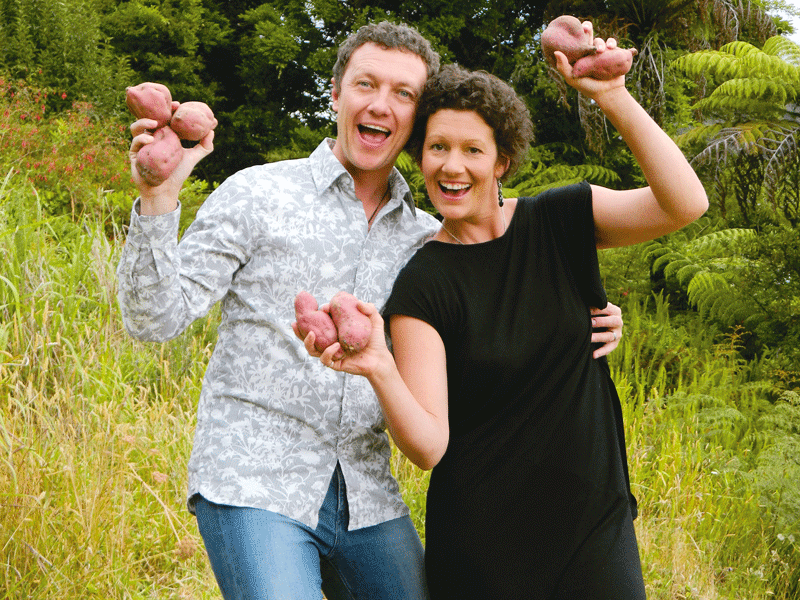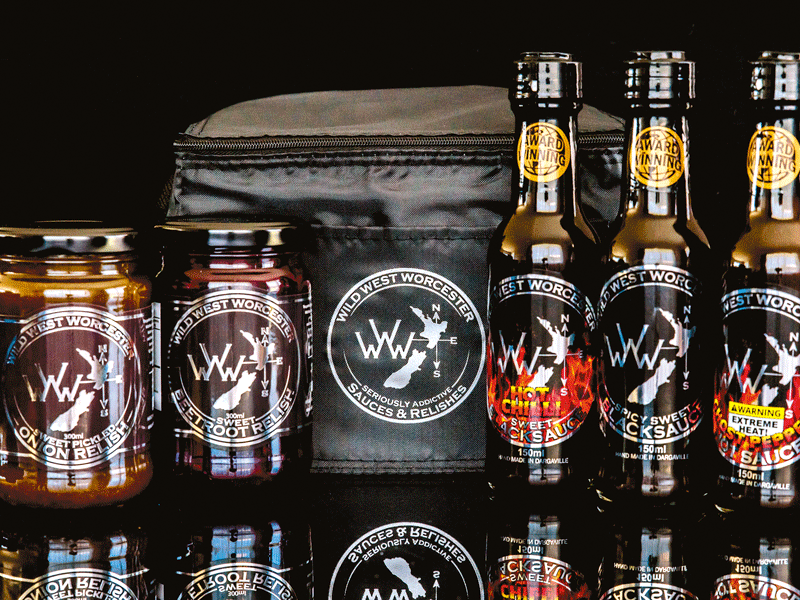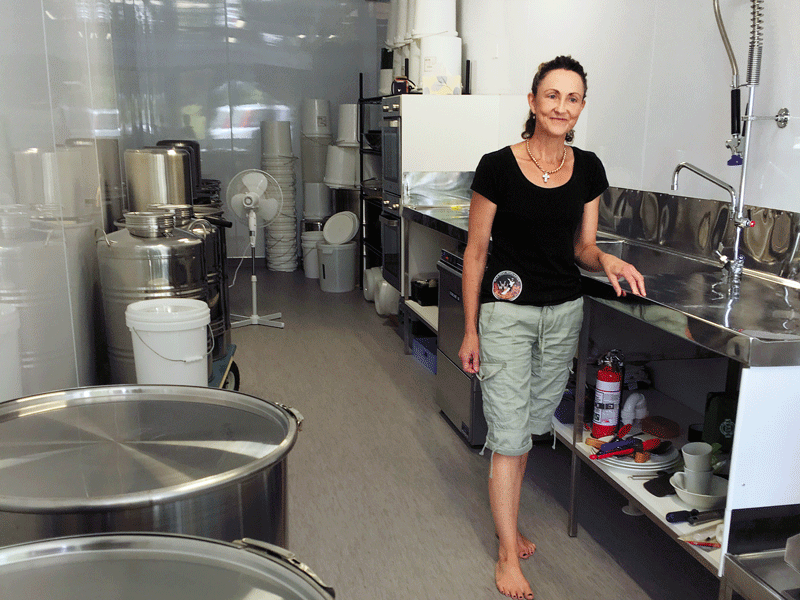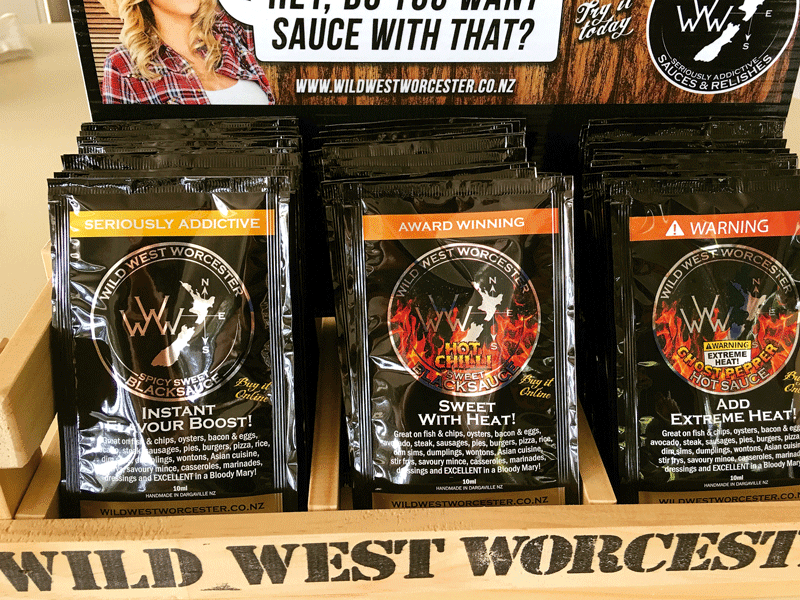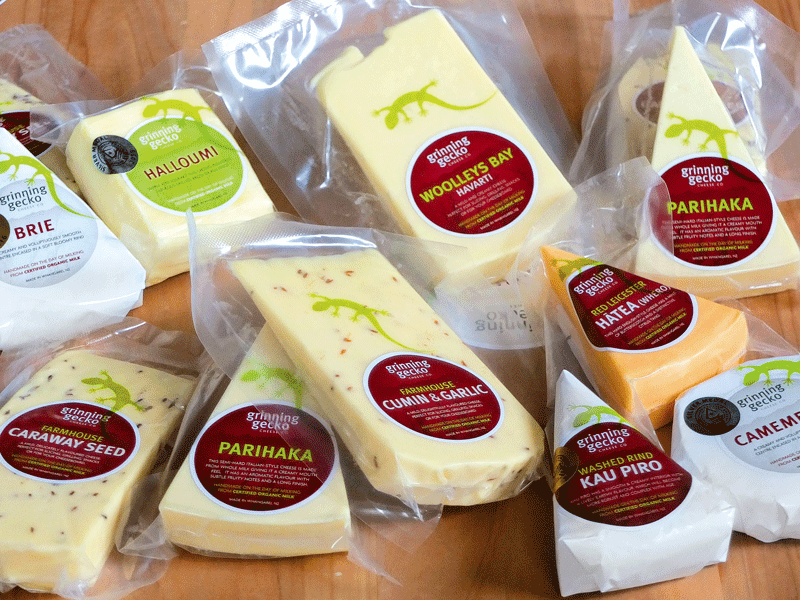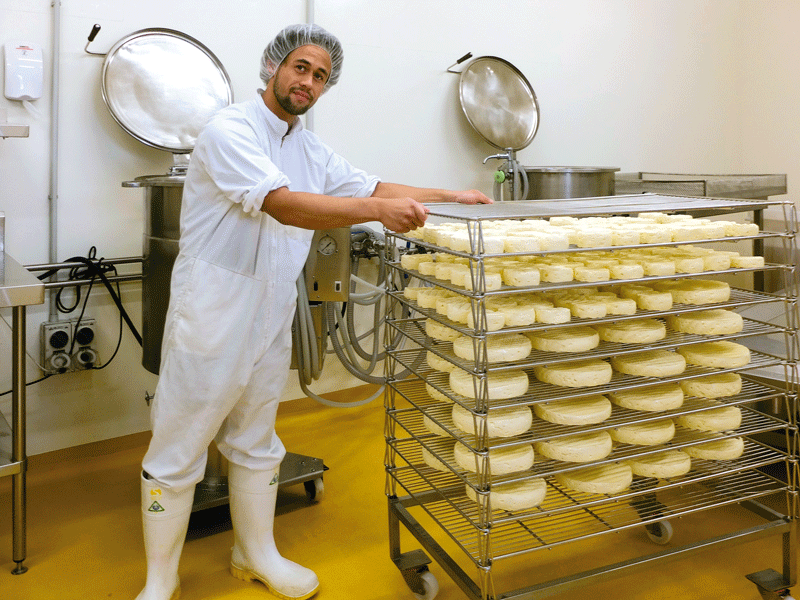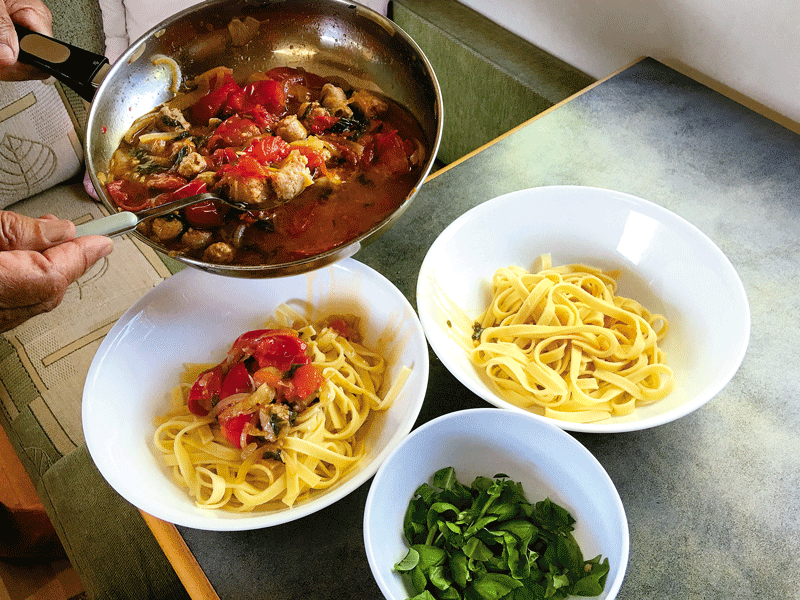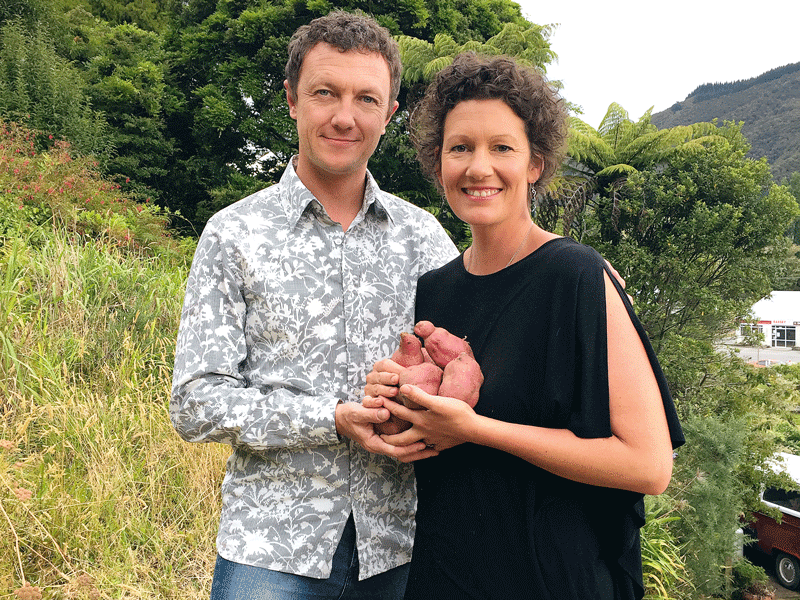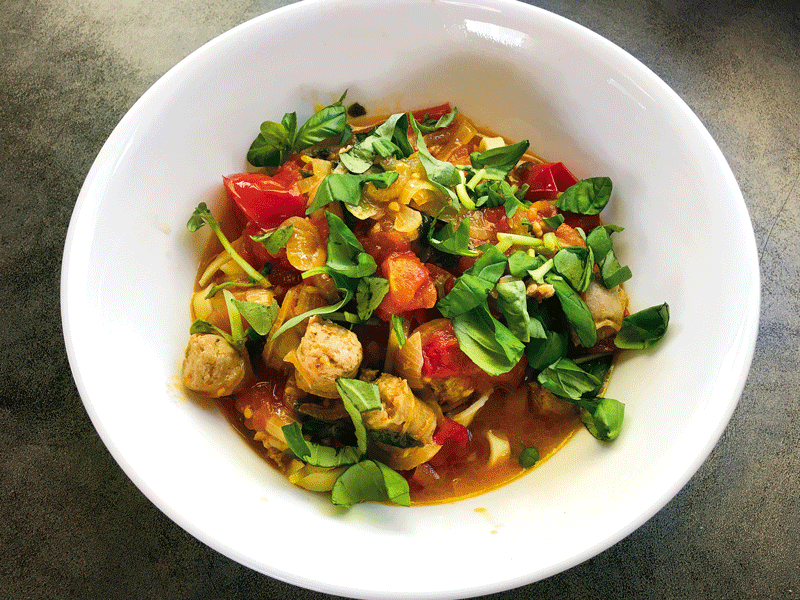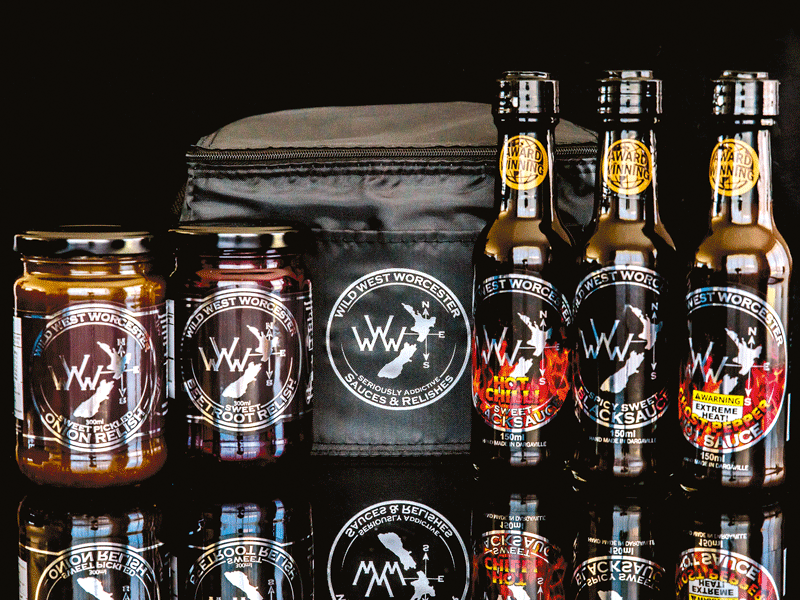Sausage superior
I haven’t much to say about Wellsford, but close by is the hamlet of Hotea North and that’s where I found Greg Scopas who lives on a five-hectare block of land. I found plenty to say about him.
Greg makes sausages that are far removed from the ones we throw on the barbie as a cheap substitute for steak. In 2009, competing with 400 other nominees, Salumeria Fontana sausages snagged the Supreme Cuisine Award for Artisan Food and won further awards in 2011 and 2015.
As a boy, Greg had observed the exacting skill of turning out a superior sausage when he stayed with his grandparents in Italy. Back in New Zealand, with a family of his own, he began making Italian sausages as a hobby and their reputation convinced him to go the whole hog.
The sausage-making factory he first bought in Henderson did not fit his own values, and two years later, he and his family settled in this quiet sunny valley in the north. The property came with 750 mature olive trees, and more importantly, an olive press in a pin-neat factory.
He turned half the factory into a salumeria (delicatessen) and began to produce the sausages that have now won him such accolade.
Actor Jimmy Dean once said: “A sausage is a great deal like life. You get out of it what you put into it.” Greg’s philosophy is exactly that.
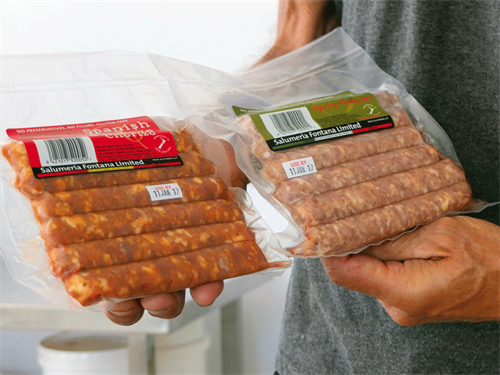
“You’d be appalled at what goes into most commercial sausages,” he says. “The essence of a good sausage is that it is made from the best ingredients.”
Crafted with fastidious care, Greg’s creations comprise some of the finest free-range pork in the land, good salt, natural spices and nothing else.
“For me, it’s about balance, not big flavours but the subtle tastes you get from good honest food.” he says. “Salumeria Fontana is still a one-man operation. I never wanted to develop
it more. I have clients who take all I
can produce. I’m making something I believe in and making it in the way it should be done.”
He applies the same philosophy to his newer venture, the production of olive oil, which, he says, is becoming more and more fascinating.
That night we tried one of Greg’s favourite dishes. We cut up a few Sicilian sausages flavoured with fennel, cooked them lightly in Salumeria Fontana Olive
Oil, added masses of acid-free tomatoes, fresh basil, and served the mixture over pasta.
Superb! I will never eat a common old banger again.
Savouring the sauce
From Wellsford we drove west through folded hills and the kumara rich plains of Dargaville, to overnight in the grounds of the Dargaville museum that afforded us refreshing views over the massive Wairoa River as it curves towards the Kaipara Harbour.
Nearby, in a lovely rural setting, I went to visit Katie Le Noel. It was a clear day, perfect for a walk up the long drive to Katie and Kevin’s attractive home set in a designer garden.
That was not what had brought me here, however. My interest lay in two shipping containers to one side of the house. Kevin has turned these into a state-of-the-art commercial kitchen for his wife’s expanding business of making Worcester sauce.
Worcester Sauce? Isn’t that made by Mr Lea and Mr Perrin in Worcestershire? I thought Katie’s business a strange one. That is until I tasted the product. Worcester sauce is known as Umami, defined as a savoury sauce that tastes, sweet, bitter, sour, and salty.
“It goes best with salty, fatty foods,” Katie says, “But you can put it on almost anything… well, not ice-cream!”
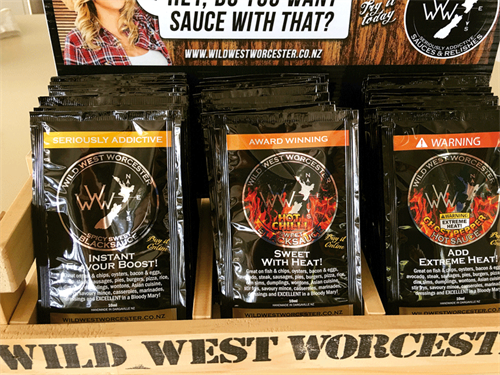
Katie developed her mother-in-law’s old recipe for more than 30 years. The process is also long. The complex mix of ingredients are soaked in vinegar for 10 months and unlike most of us, the older it gets, the better it becomes.
Demand from friends and family confirmed that the end product was good and encouraged her to take it further. As well as the Original Spicy Sweet Black Sauce, the Wild West Worcester range now includes Hot Chilli Black Sauce, Ghost Pepper Hot Sauce, and Sweet Pickled Onion Relish made as a by-product.
In the two years the company has been commercial, the sauces have won two bronze medals at the World Hot Sauce Awards and three in the Australian Mr Chilli Awards.
To help spread the word, Katie has had thousands of small sample sachets made. “If people taste it, they buy it,” she says.
Her aim is for every household in New Zealand to eventually have a bottle of Wild West Worcester in its larder. Although stored in a caravan, the three I bought will surely be in the count.
Cheese to please
It’s a pleasant drive from Dargaville to Whangarei through compact hills tattooed with totara trees, and we parked for the night at the Northland Golf Club. The intriguingly entitled Grinning Gecko Cheese had drawn me to the city. What’s in a name? Sometimes plenty.
Owners James and Catherine McNamara are passionate about nature, Northland, and cheese, and five years ago, they ditched their day jobs and turn a brave face to the challenges of making cheese that held to the principles they believe in—sustainability of the source, organic produce, and support for the local community. The name was inspired by the green geckos that live on their property, and it fitted with the organic image they wanted to portray. I’m not sure about the grin. “Milk makes cheese,” James says. “If you want the best cheese, you need the best milk. That’s why we travel 50km (each way) a day to collect milk that is certified organic from a farmer who has a herd of Scottish Ayrshire cows. He is as passionate about the quality of milk as we are and grows around 34 different grasses to maintain the health of the soil and the animals.”
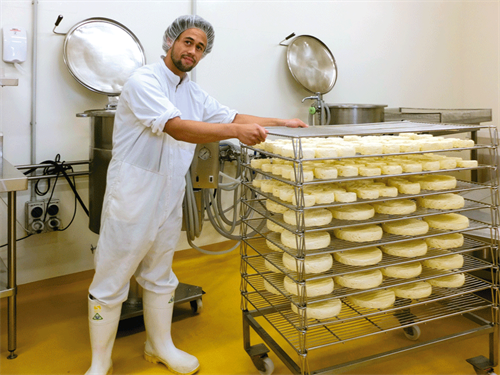
The milk is picked up early in the morning and is gently pasteurised in the factory within an hour of leaving the cow. The cheese is made on the same day. Having visited the factory, I can attest to the difference that producing a product with respect and integrity can make. Grinning Gecko cheeses are smooth and creamy in texture and the tastes are lingering and memorable. It’s hardly surprising then that they have already creamed off a handful of medals in the Champion of Cheese Awards over the past few years. This year, a cheese Catherine developed with the company’s upcoming star, Zev Kaka-Holtz, won a gold medal. It’s called Kau Piro (stinky cow), which refers to its strong taste and pungent smell. Zev has not been with the company for long but he took charge of the new product and drove it to victory. His story is typical of the seven staff who work at Grinning Gecko. A seasonal worker, he first took the job as a gopher. But he’s a fast learner. As chief cheese maker, Catherine’s a good teacher and Zev already plays an important role in the company’s success.
“It is not just the product but the loyalty of our staff and the support from the community that has put us on our feet,” James says.
I have a feeling the Grinning Gecko is about to fly.
Preserving tradition
Further north we took the road that cuts through the hinterland of the Bay of Island towards Kaikohe. To the left, as we drove up a sloping hill just before the village of Ohaeawai, we recognised a landmark homestead set in a sprawling garden and extensive fig and citrus orchard. This is Ludbrook House (circa 1920). The name Ludbrook has been associated with the north since 1860, when Samuel Ludbrook bought 1000 acres of land at Ohaeawai, much of which is still farmed by Ludbrooks, 160 years on.
And now the name has travelled the length and breadth of New Zealand emblazoned in gold on the labels of top quality, old-fashioned preserves, jams, jellies, condiments, and cakes.
When Sam and Chris Ludbrook, the incumbent homestead owners, handed the farm management to their eldest son, they turned their historic home into a luxury lodge. The panforte and cakes that Chris made for guests were soon in high demand and a commercial kitchen was installed.
“Using it only once a year was a waste,” Chris says, and it set me thinking,
“For years I’d fretted about the fruit in the area—lemons, quinces, plums, limes, tamarillos, and figs—being left to rot on the trees. The crops were often so abundant that people didn’t know what to do with them. It came to me that I did.” She referred to old recipes books that had belonged to her aunt, her mother, and her grandmother and armed with large boxes began collecting unwanted produce from properties close at hand.
Fast forward to today and the results of those small beginnings are everywhere, encapsulated in the stylishly presented products that win awards and excite the taste buds of anyone who loves innovative food. The fruit in Ludbrook House’ jellies, syrups and preserves come straight from the trees (many of them her own) to the pot, and apart from sugar and spice, nothing is added to tamper with natural flavours.
Products are sold from a small gazebo on the property, but most are found in markets and gourmet retail shops around the country.
Chris took me into the halls of the old house where the air was redolent with the aroma of boiling figs. Ludbrook House Figs-in-Syrup, Pickled Lime, and Merlot Grape Jelly have all won Cuisine Artisan Awards.
Among the plethora of products in the storage shed, I spotted Tamarillo and Chilli Jelly, Orange Pickle, Fig Paste, Quince Jelly, Loquat Syrup, and Preserved Lemons and Limes. I’d have taken one of each if I’d had room in the caravan. Instead, I opted for a jar of Poached Quinces and a bottle of Lime and Chilli Syrup. The proof of the quality was in the eating.
Chip shape
Even further north we arrived in Kaeo, a blink-and-you-miss town in the Far North, named after a shellfish and known for its propensity to flood. It was also New Zealand’s first Wesleyan Mission Station, and dating from that time are some attractive colonial buildings. These are gradually being spruced up and turned into shops and restaurants that lure passing travellers.
But my reason for pulling over in Kaeo was that I’d learnt it was also the birthplace of kumara crisps. In a two-story, colonial kauri villa (circa 1879), which was once the Templar Lodge, live Anna Valentine and Gareth Megginson. Attracted by the lifestyle, the weather, and the community, the couple left Wellington in 2007, drove north in their VW Kombi, and settled in the village.
Anna, a vegetarian chef, began making kumara-top pies and other goods for the Kerikeri Farmers Market. One week, when the couple had more kumara than they could use for pies, they hit upon the idea of turning the surplus into crisps. At the market that Sunday, consumers swooped on the product like a flock of seagulls.
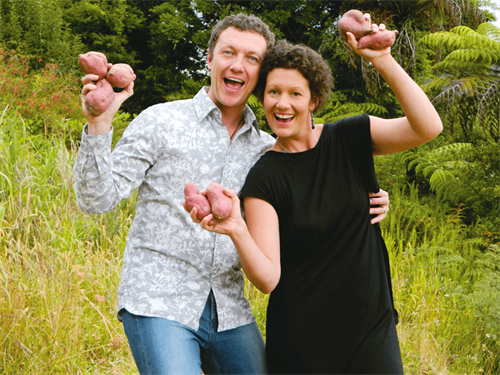
Anna and Gareth realised they were onto something. Two years later, orders had outgrown the capability of their kitchen-in-a-caravan and they shifted the enterprise to larger premises. Three hundred bags now leave the small factory each week and are marketed around Auckland and the north. The labels read: ‘The Original Kumara Chips’.
“That’s because, as far as we know, we were the first to make and market them,” Anna says. “But now there are quite a few brands. It’s nice to think we made a product that other people have copied. Of course, we think ours is the best. We keep things simple, using red kumara fresh from Dargaville, cooking them in rice-bran oil, and only adding flavours from natural sources.” The brand’s logo, designed by local Maori tattoo artist, Te Rangitu Netana, makes the chip packets instantly recognisable.
Recently, the couple filled an order for 2000 bags ordered by a company in Shanghai. It would seem the future’s looking chipper for this couple from the Far North.

